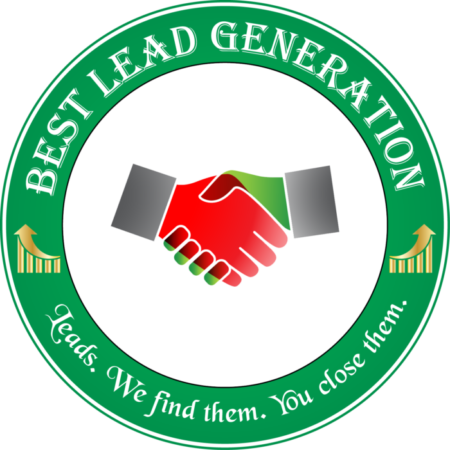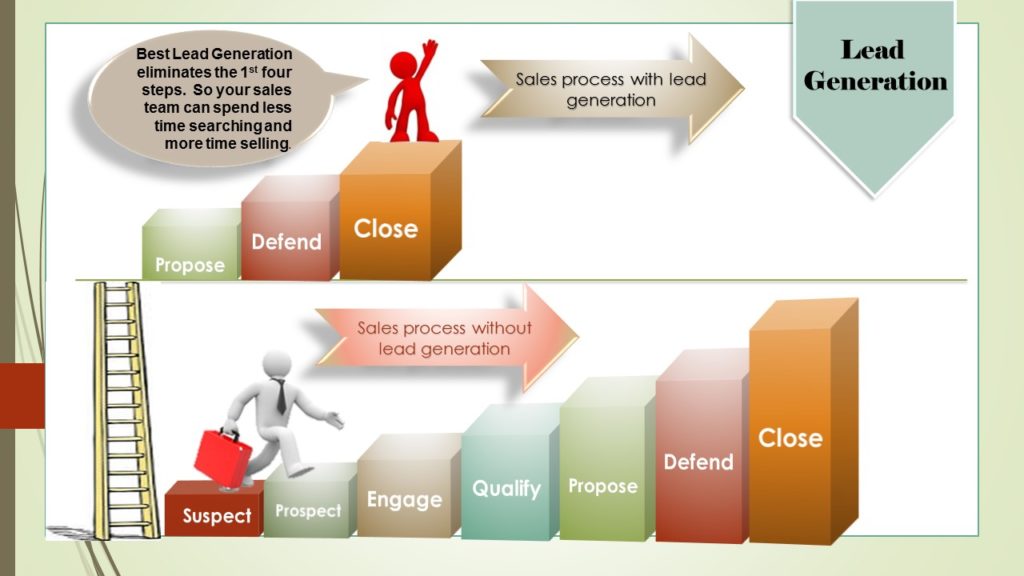


A sales lead is a person or business who may eventually become a client. Sales lead also refers to the data that identifies an entity as a potential buyer of a product or service according to investopedia.com. A sales lead can be someone that may eventually purchase your product or service and it’s a critical component of the lead generation process. Good quality sales leads have the potential to drive a business to success and financial growth.
In marketing, lead generation is the initiation of consumer interest or enquiry into products or services of a business. Leads can be created for purposes such as list building, e-newsletter list acquisition or for sales leads. Wikipedia
Another way to look at lead generation is the way a business generates leads to make sales. There are several ways to generate leads that can be online, offline, or a combination of both. Some examples of online lead generation could be social media marketing using Google ads, Facebook ads, YouTube, Pinterest, and/or Instagram advertisements. A few more online options could be lead generation funnels, email marketing, and more. Offline examples could include networking events, business conferences, and more.
Some terms to be familiar with from a sales perspective are suspect, prospect, engage, qualify, propose, defend, and close. A suspect could be a potential lead that hasn’t been qualified yet that may have been lingering around a business or entity’s sales funnel, but hasn’t expressed an intention to buy the product or service. A prospect is a potential lead that hasn’t been qualified yet, but has an appearance that seems to fit the general profile of a sales lead for a particular client. (In some instances, the terms suspect and prospect are used interchangeably). Engage is referring to any number of different types of contact made with the prospect, and qualify is the process of determining whether or not the prospect is a valid sales lead. Propose typically implies making an offer to the sales lead of the product or service being offered. Defend would generally include responding to any rebuttals, and then closing the deal.
Below is an example of how Best Lead Generation helps with the sales process for business-to-business sales. If your company could use excellent lead generation, request a quote by clicking here.
Best Lead Generation focuses on providing quality leads over quantity leads. Some lead generation companies will provide long lists of leads that are often outdated or inaccurate. So while they provide alot of contact information a significant amount of it is just a waste of your time. You or your team may spend hours sorting through useless contacts hoping to uncover a needle in a haystack that is a valid contact, with accurate contact information, and that has an interest in your product or service. Best Lead Generation will save you time. We provide quality leads over quantity leads.

Lead generation is important because it can be a key factor in the financial success of a company. Lead Generation is very important to the growth of a business. Depending on the type of product and/or services offered the process could vary, but fundamentally they are the same.
Prospecting is one of the early steps in the sales process, which consists of identifying potential customers, aka prospects. The goal of prospecting is to develop a database of likely customers and then systematically communicate with them in the hopes of converting them from potential customers to current customers. Once the research has been done to find out who you’re looking for, prospecting is finding out where the buyers you are looking for are “located.” It is also about finding out the most effective way to reach them to achieve the desired results.
Customer acquisition also includes the process of converting existing prospects into new customers. Once you know the who, what, where, and how then you take action to complete the sale. Ask for the sale.
Lead nurturing is the process of developing relationships with buyers at every stage of the sales funnel, and through every step of the buyer’s journey. It focuses marketing and communication efforts on listening to the needs of prospects, and providing the information and answers they need. After the sale is complete the work is not done. It’s important to continue to take care of your buyers by providing excellent customer service and leaving the door open to get more sales in the future.
Having a lead generation process in place is important because it will help you get more sales, organize your efforts, target your approach, save time trying to figure out what to do next, help determine whether or not you are achieving the goals you have set forth, create an opportunity for repeatable success, and just make things easier by providing more consistency to your processes.
Business-to-business sales often referred to as b2b sales is when a business sales products or services to other businesses. There may be some differences between how lead generation is done for business-to-business sales and business-to-consumer sales. The scope of the lead generation methods used will depend on the industry, type of products and/or services, the target market’s demographics and needs, and a few other factors. A few of the keys are to clearly identify your target market, meet your target market where they are, and offer them solutions that meet their needs. It’s important to be “you-centered.” Keep the client’s needs top of mind. Then provide them with a solution that is easy to understand, obtain, and that solves the root of your client’s business problem.
Business-to-consumer sales are sales from a business directly to consumers and are often referred to as b2c sales. The lead generation process for these sales will likely be impacted by factors similar to those previously mentioned as it relates to business-to-business sales. Some of the primary differences may be that you may be able to narrow down the demographics of the target market with even greater precision than before depending on the type of product or service offered.